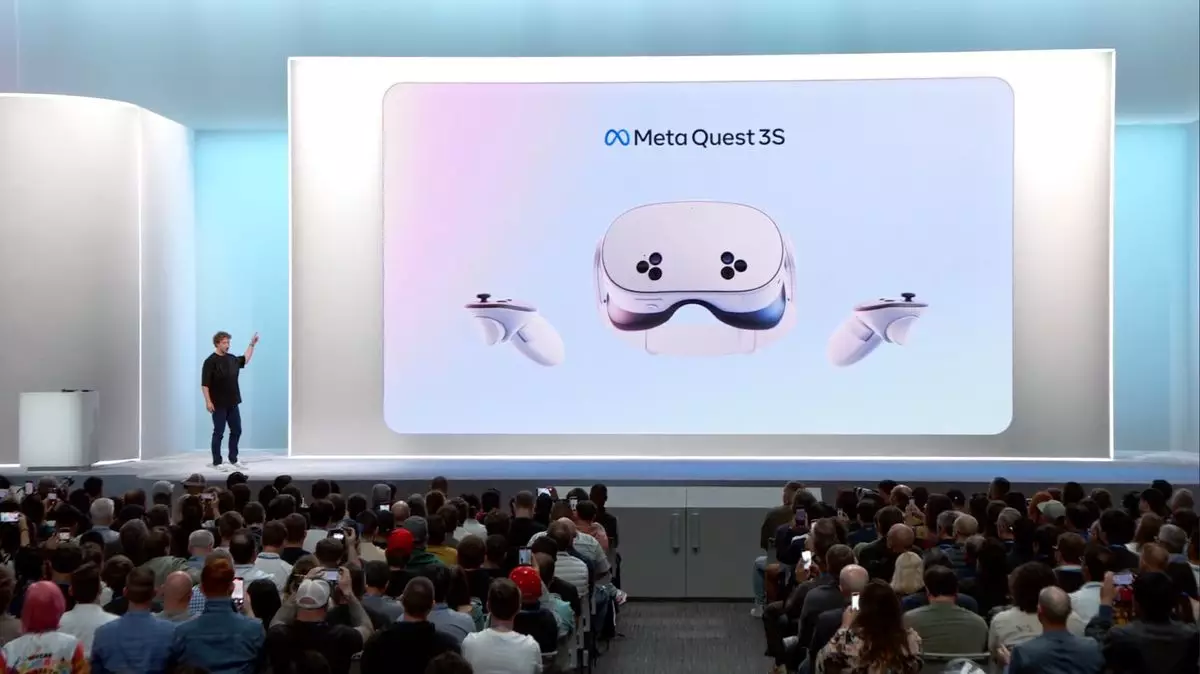As the realm of virtual reality (VR) continues to grow and evolve, tech enthusiasts eagerly anticipate the latest gadgets that promise immersive experiences. In an exciting development, Meta has unveiled a new addition to its VR lineup: the Quest 3S. Scheduled for release on October 15, this device serves as a more affordable alternative to its predecessor, the Quest 3. This article will delve into the features, pricing, and implications of this new headset, while offering a critical perspective on its potential impact on the VR market.
One of the most significant aspects of the Quest 3S is its pricing structure. The entry-level model, which boasts 128 GB of storage, is set at $300, undercutting the Quest 3 by a substantial $200. For those who require additional storage, the 256 GB model will be available for $400. Such pricing strategies indicate Meta’s keen awareness of market demands and the need to provide a budget-friendly option for consumers.
Notably, the Quest 3S is powered by the Qualcomm Snapdragon XR2 Gen 2 processor, which enables a robust array of virtual experiences similar to those offered by the Quest 3. Mark Zuckerberg, during the launch keynote, emphasized that the Quest 3S retains the core features of its more expensive counterpart. This means users can expect compatibility with the same apps and experiences across both devices, making the Quest 3S an attractive option for newcomers to VR.
Trade-offs in Technology: Fresnel vs. Pancake Lenses
While the Quest 3S appears to promise a wealth of features at a competitive price, there are trade-offs to consider. The most noteworthy difference lies in the lenses: the Quest 3S will utilize traditional Fresnel lenses instead of the more advanced pancake lenses found in its pricier sibling. This change raises questions about the overall user experience, including comfort levels and field of view. Potential users must weigh the value of cost savings against these possible compromises in visual fidelity and immersion.
Ultimately, until consumer reviews and hands-on experiences become available, it’s challenging to assess the ramifications of this switch completely. However, if the overall design remains close to that of the Quest 3, it might be a reasonable compromise that broadens access to VR technology without completely sacrificing quality.
The launch event served as a reminder that even the most advanced technology is not immune to hiccups. During the keynote, Zuckerberg introduced a live demonstration that suffered a major crash, which led to a comedic moment as he awkwardly noted, “I don’t know where we are in the demo at this point.” Such blunders happen even to the most seasoned presenters, yet they do cast a fleeting shadow on the excitement surrounding new product launches.
Despite the inconvenience, these technical issues are often seen as part of the process in the tech industry. They underscore the challenges faced when merging hardware with complex software, especially in a rapidly evolving field such as VR. Meta has a storied history of developing software that pushes the envelope, and it stands to reason that overcoming such hiccups will lead to more fulfilling user experiences in the future.
In addition to the exciting features inherent to the Quest 3S itself, Zuckerberg revealed a significant partnership with Microsoft. This collaboration aims to enhance integration between the Quest devices and Windows PCs, allowing users to seamlessly interact with their desktop environments within the VR framework. This advancement can effectively make the Quest a genuine extension of a user’s personal computing device, thereby expanding its functionality and appeal beyond gaming alone.
As more users embrace VR for productivity and collaborative tasks, this integration could redefine how both hardware and software intersect, enticing a new demographic into the VR fold.
As the Quest 3S prepares for its launch, it sets the stage for an intriguing shift in the virtual reality landscape. Its affordable pricing, optimized performance, and wide-ranging compatibility position it as an attractive option for those entering this immersive technology space. However, its success will ultimately depend on user experience and how well it performs relative to its competition.
The emergence of the Quest 3S likely signals a gradual decline in the presence of the aging Quest 2, as the industry shifts toward catering to more financially-conscious consumers. With the potential for budget-friendly innovation to open new doors, the Quest 3S could play a pivotal role in shaping the future trajectory of VR technology, making it accessible to a broader audience and integrating sophisticated features that appeal to both gamers and professionals. As we count down to its release date, excitement brews at the thought of what lies ahead for both Meta and the growing community of VR enthusiasts.

